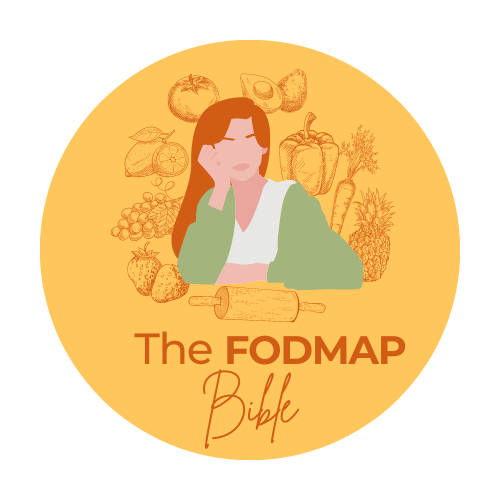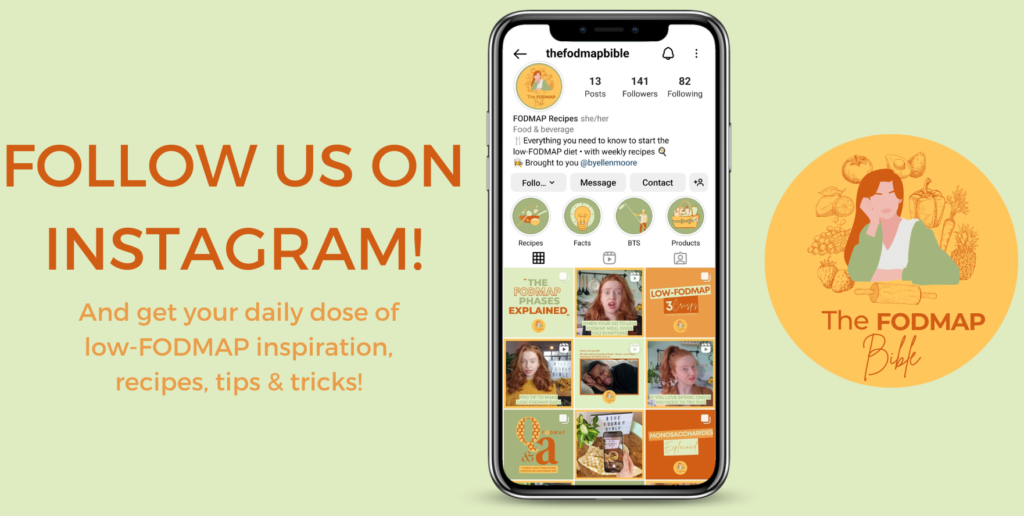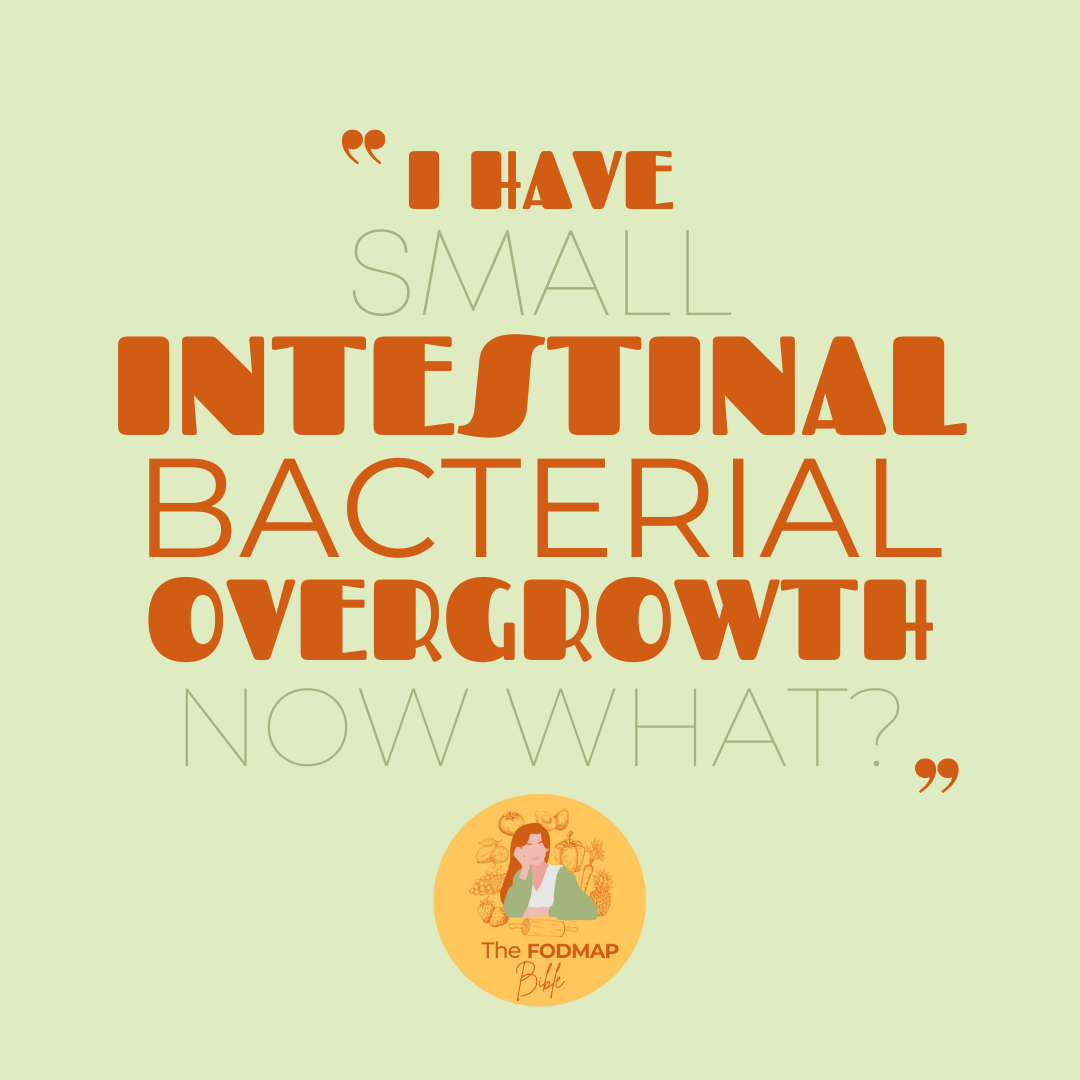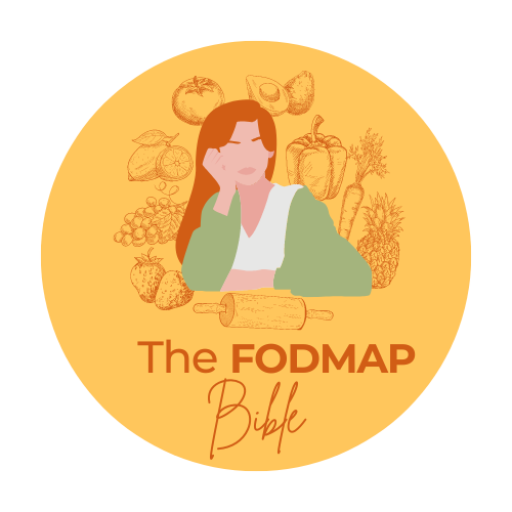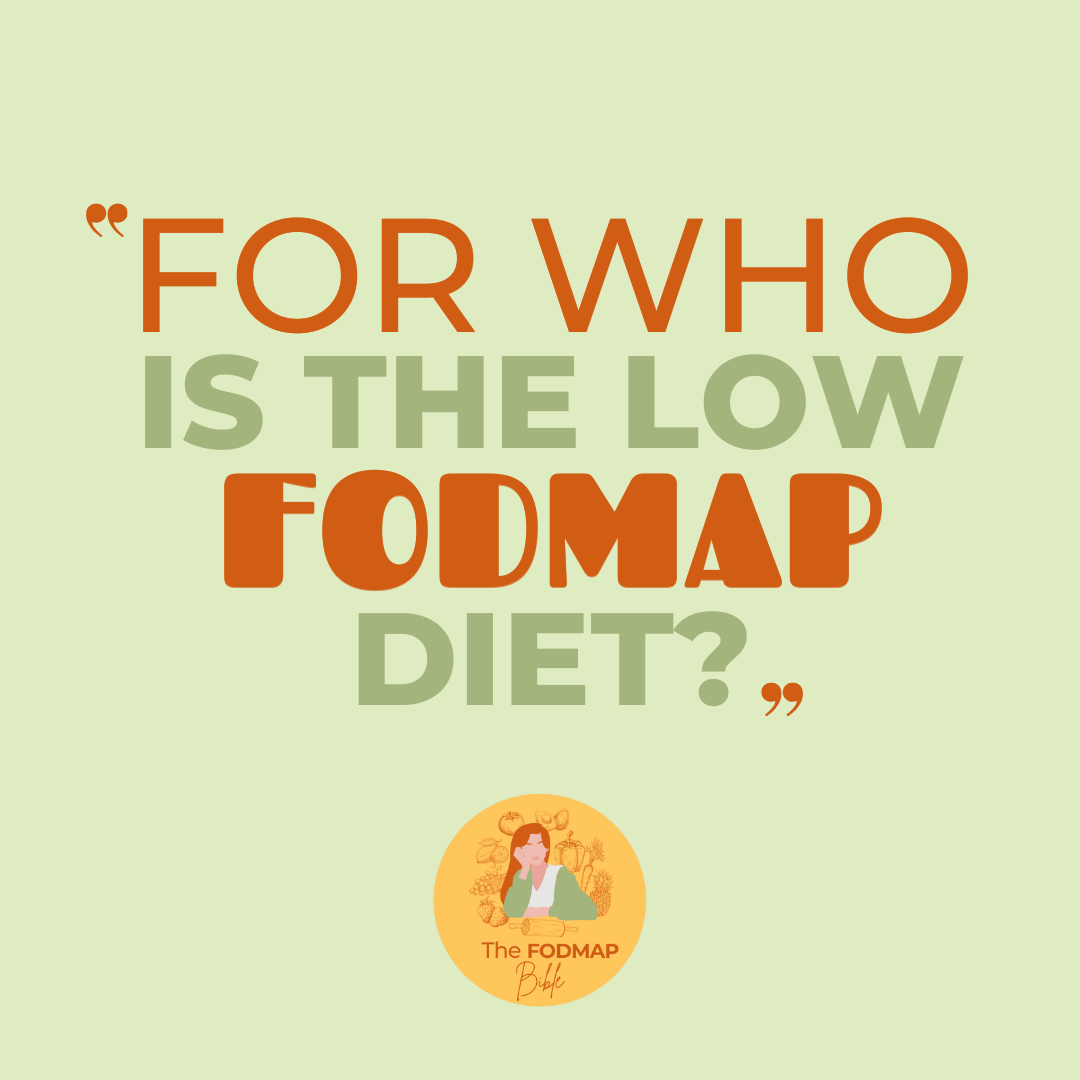
For Who Is The Low-FODMAP Diet?
The low-FODMAP diet is an evidence based method of minimizing symptoms of those suffering from Irritable Bowel Syndrome (IBS) and / or Small Intestinal Bacterial Overgrowth (SIBO). These conditions can result in symptoms like:
● Bloating;
● Constipation;
● Diarrhea;
● Nausea;
● Abdominal pain.
The low-FODMAP diet is also a medically induced diet. This means that if you don’t suffer from any symptoms, it is very unlikely that you suffer from a gastrointestinal disorder and thus following the low-FODMAP diet won’t benefit you in any way shape or form.
Therefore we highly discourage you to follow the low-FODMAP diet if there is no medical reason to do so, not only because you won’t benefit from doing so, but because this diet is very restrictive and might lead to an unnecessarily unhealthy relationship with food.
The cause of IBS & SIBO
A direct cause of diseases like IBS and SIBO has not yet been found, however, both a sudden change in food intake & excessive use of antibiotics have been linked as possible causes to these gastrointestinal disorders.
Why the FODMAP diet works
The FODMAP diet works, because it cuts out those short-chain carbohydrates that are poorly absorbed and / or rapidly fermented by the gut bacteria – in the gastrointestinal system of people suffering from IBS and / or SIBO, while leaving the good short-chain carbohydrates the gut needs.
FODMAP stands for…
F ermentable
O ligosaccharides
D isaccharides
M onosaccharides
A nd
P olyols
The term FODMAP was coined to give a name to 4 categories of short-chain carbohydrates which all irritate the gut, one way or another. These are:
1. Oligosaccharides;
2. Disaccharides;
3. Monosaccharides;
4. Polyols
Two of these four categories are umbrella terms: oligosaccharides and polyols. In total there are six types of short-chain carbohydrates that irritate the gut, causing the symptoms named above. These categories are:
• Fructose;
• Lactose;
• Galactoligosaccharides;
• Fructans;
• Sorbitol;
• Mannitol.
Fructose is a monosaccharide.
Lactose is a disaccharide.
Both galactoligosaccharides and fructans are oligosaccharides.
Both sorbitol and mannitol are polyols, like stated in the overview below.

Want to know more about all things low-FODMAP? Follow us on Instagram & TikTok @theFODMAPbible – for recipes, inspiration, explanations and loads of advice on how to make your life on the low-FODMAP diet as enjoyable as it would have been without. Trust me: you won’t regret it, pinky promise!
We hope to see you on our socials 🙂
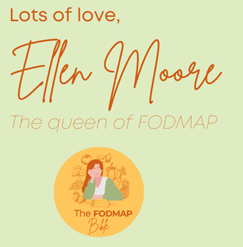
Please note that we are NOT doctors & we do NOT provide any medical advice
If you’re struggling with symptoms – that could potentially be a gastrointestinal disorder like Irritable Bowel Syndrome (IBS), Inflammatory Bowel Disease (IBD) or Small Intestinal Bacterial Overgrowth (SIBO) – we strongly suggest for you to seek medical help and recommend you to reach out to a healthcare professional, who can offer you the right guidance.
We want to emphasize that the low-FODMAP diet is a medically induced diet, that should be started only when a doctor diagnosed you with a gastrointestinal disorder and should always be done under strict supervision of a specialized dietician or other healthcare professional.
Nonetheless, we maintain strict policies when it comes to the prevention of spreading fake news. Our posts are written by research journalist @byellenmoore and are based upon both scientific research and her own personal experiences with being on the low-FODMAP diet, as a patient suffering from Irritable Bowel Syndrome (IBS). We share what we know, to give you a better understanding of that from which you suffer, in order to make your journey – going low-FODMAP – a little bit easier!
